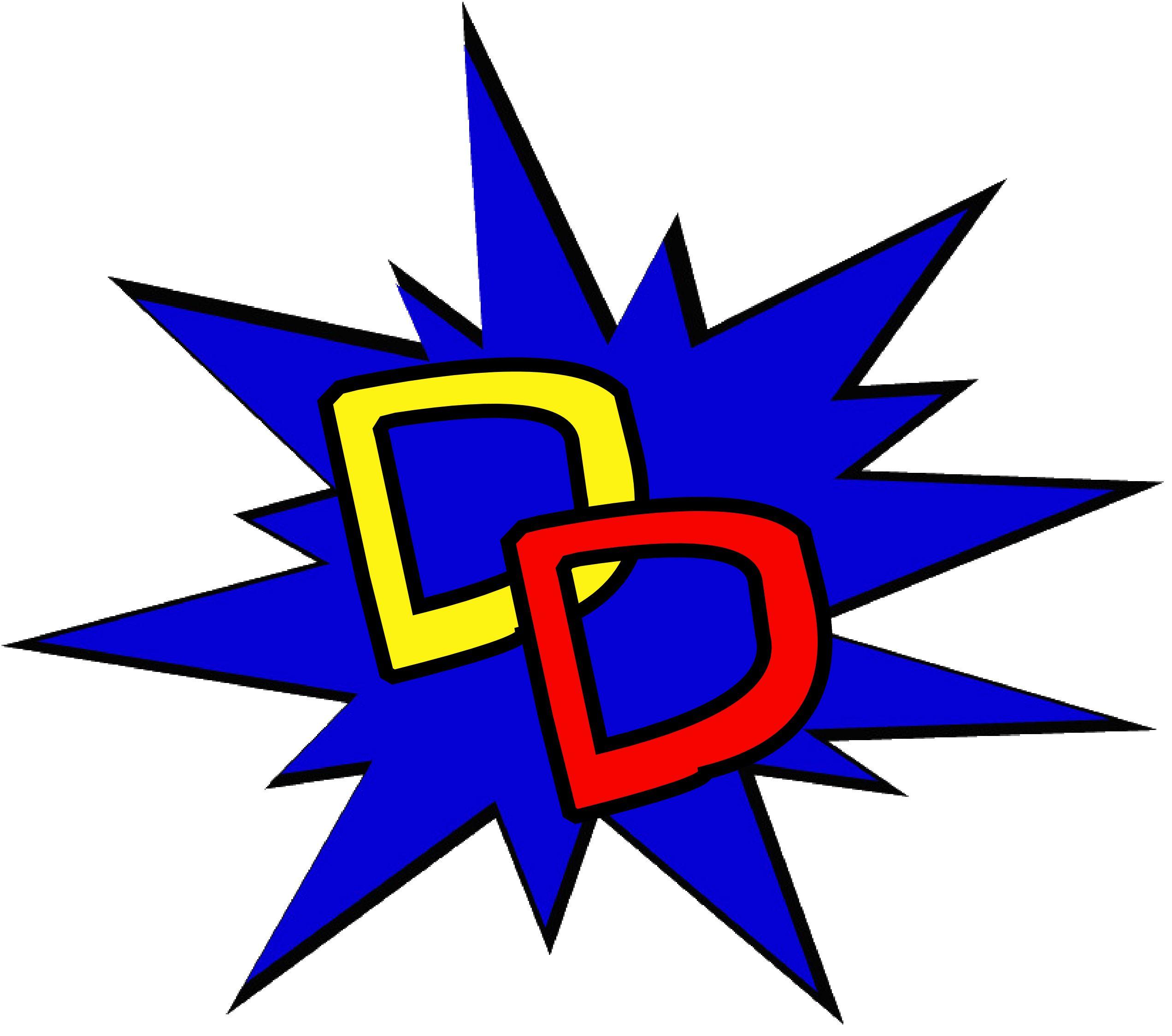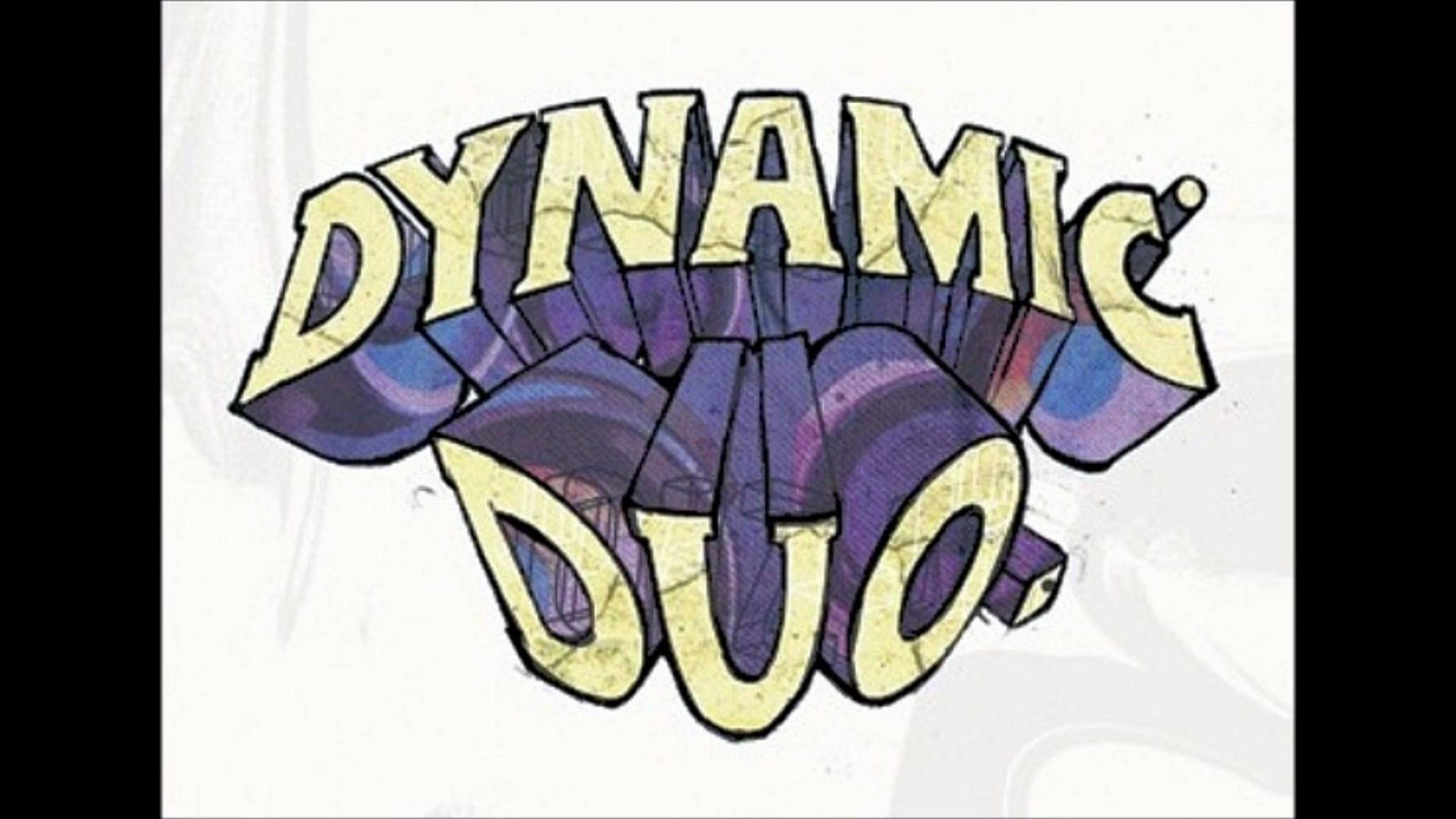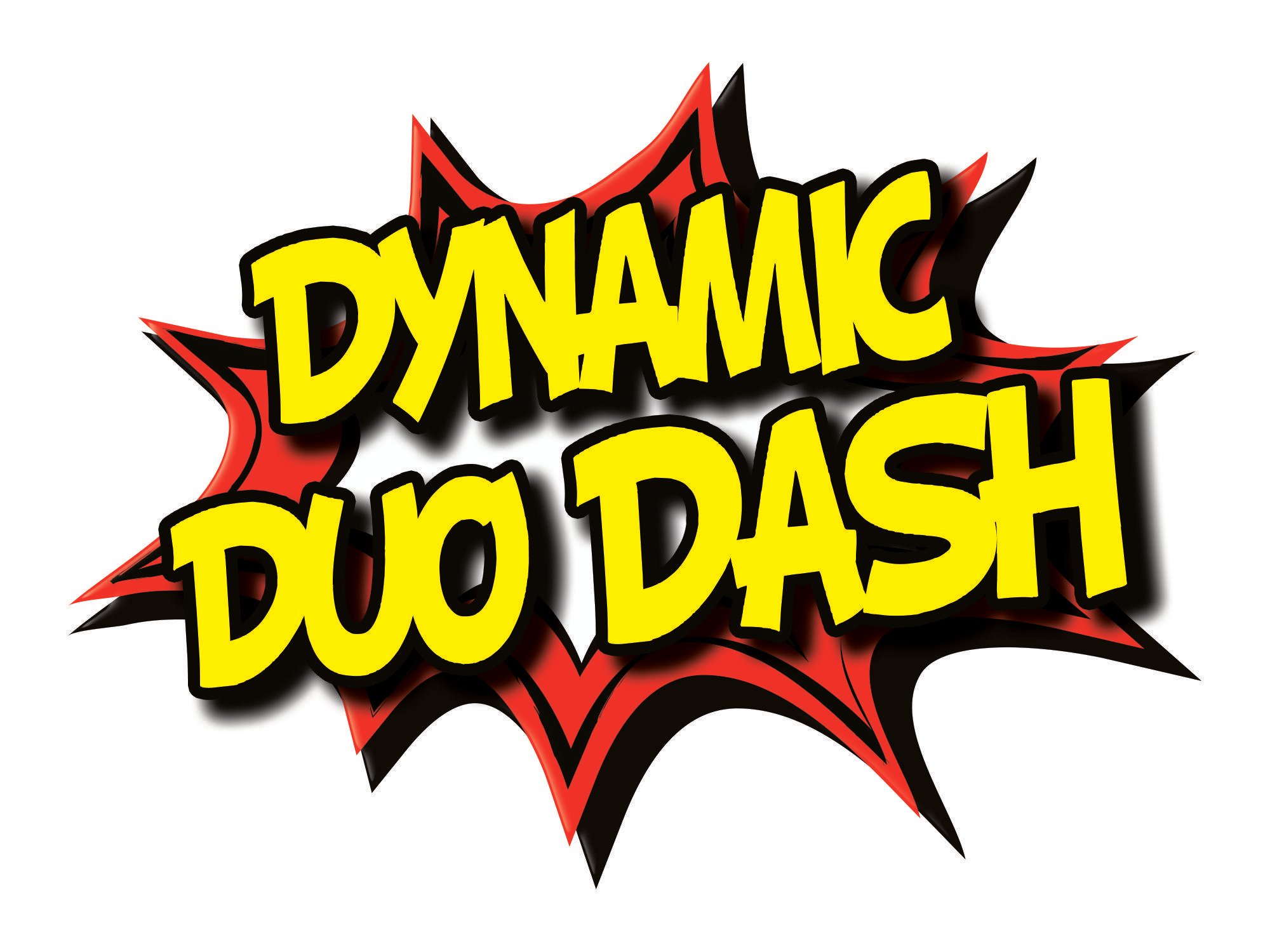Crafting Compelling Dynamic Duo Concept Art: Visualizing Character Connections
Have you ever wondered what makes certain character pairings just click? It's more than just two figures standing side by side; it's about a deep, visible connection, a sense of shared purpose, or even interesting friction. That special something, that spark, is at the heart of what we call dynamic duo concept art. It's the visual blueprint for partnerships that truly feel alive, that seem to move and change right before your eyes, even on a static page.
Think about your favorite stories, whether they are from comics, movies, or games. There's often a pair of characters whose interactions drive the whole thing forward. Their unique qualities, when put together, create something bigger than each person alone. This kind of visual thinking helps bring those relationships to life, right from the very start of a creative project, too it's almost like magic.
Creating these kinds of powerful visual connections for two characters is a skill many artists and storytellers want to get good at. It helps people feel something for the characters and makes the story feel more real. Today, we'll talk about what goes into making these character pairings really shine, and how you can bring that special energy to your own designs, you know.
- Unveiling Henry Aronofskys Age A Journey Of Cinematic Evolution
- Unlocking The Dynamic Role Of Olivia Rodrigos Mother Insights And Discoveries
- Unveiling The Enigmatic Daniel Silber A Musical Journey Of Discovery
- Unveiling The Life And Impact Of Andy Cohens Husband Discoveries And Insights
- How Old Is Rob Lowe
Table of Contents
- What is Dynamic Duo Concept Art?
- Why Duos Matter in Storytelling
- Key Elements of a Strong Visual Pairing
- Showing Chemistry Through Design
- Practical Steps for Creating Your Own
- Common Challenges and How to Handle Them
- Current Trends in Duo Design
- Frequently Asked Questions
What is Dynamic Duo Concept Art?
Dynamic duo concept art is about showing two characters together in a way that suggests their relationship, their shared purpose, or even their differing personalities. It's not just about drawing two individuals; it's about drawing their connection. The word "dynamic," as we understand it, means something marked by continuous activity or change. It also refers to an interaction or system that shows constant progress, perhaps with positive results. So, when we talk about a "dynamic duo," we are talking about two characters whose very presence together suggests activity, change, or a kind of lively interaction. It's that sense of energy, that feeling of things happening between them, that makes them dynamic, you know.
This kind of art aims to capture the essence of a partnership before a story even begins. It helps creators and audiences alike get a feel for how these characters will act when they are side by side. It's about hinting at their past, their present, and what they might do together in the future. The goal is to make the pairing feel alive, almost like they could walk right off the page, more or less.
Artists use this method to work out character looks, their gear, and how they relate to each other visually. It's a crucial step in making characters believable and giving them a solid place in any kind of story. This early visual work sets the tone for everything that comes next in a project, very often.
- Unveiling Eduardo Saverins Wealth Lifestyle And Impact
- Unveil The Enchanting World Of Zach Galifianakis Beloved
- Unveiling The Enigmatic Tia Blanco Discoveries And Insights
- Uncover The Unbeatable Polar Vantage V3 Review And Pricing Insights Revealed
- Unveiling The World Of Brook Ashcraft Secrets Success And Surprises
Why Duos Matter in Storytelling
Stories often get a lot of their spark from character relationships. A strong duo can carry a whole plot, giving people a reason to keep watching or reading. When you have two characters who play off each other well, it creates tension, humor, and moments of real feeling. This makes the overall story much more engaging. So, getting their visual presentation right from the start is quite important.
For creative teams, seeing dynamic duo concept art helps everyone agree on the look and feel of the main characters. It helps make sure that the visual style supports the story's ideas. This kind of art acts as a guide for animators, modelers, and even writers, making sure everyone is on the same page about who these characters are and how they connect, actually.
A well-designed duo can also become very memorable. Think of all the famous pairs throughout history, in fiction and even in real life. Their visual presence often sticks with us, becoming a symbol of their bond. Good concept art makes these connections clear and strong, leaving a lasting impression on anyone who sees them, you know.
Key Elements of a Strong Visual Pairing
Creating a duo that feels truly dynamic involves thinking about several parts of their visual design. It's about more than just drawing two good-looking characters. It’s about how they look when they are together, and what that tells us about them, basically.
Visual Contrast and Complement
One of the most effective ways to make a duo dynamic is through visual contrast. This means making the characters look different in ways that highlight their individual traits but also show how they fit together. Maybe one is tall and thin, while the other is short and wide. Perhaps one has bright, wild colors, and the other has muted, earthy tones. These differences can tell a story about their personalities and how they balance each other out. It's about finding ways for them to be distinct but also to work as a pair, like your favorite socks, you know.
For example, if one character is very serious, their design might have sharp angles and dark colors. Their partner, who might be more lighthearted, could have softer shapes and brighter colors. These visual cues give us clues about their inner workings without a single word being said. The visual choices should complement each other, meaning they complete the picture, rather than clashing in a bad way. This helps make the pairing feel whole, in a way.
Body Language and Interaction
The way characters stand, how they look at each other, and how they might touch or gesture can say a lot about their relationship. Dynamic duo concept art often shows characters in poses that suggest interaction. Are they leaning on each other? Are they facing off? Are they looking in the same direction, showing shared focus? These subtle things communicate volumes about their bond. It's about showing action, even when the image is still, nearly.
A character's posture can tell us if they are protective, playful, or perhaps a bit annoyed with their partner. The distance between them, how their limbs are positioned, and even the direction of their gaze all contribute to the story of their connection. Thinking about these physical cues helps make the duo feel more real and relatable, you know.
Shared Visual Language
Even with strong contrast, a dynamic duo often shares some kind of visual language. This could be a repeating shape, a similar pattern on their clothes, or even a consistent material used in their gear. These shared elements tie them together visually, making them look like they belong in the same world and perhaps on the same team. It’s like a secret handshake for their designs, you know.
This shared visual language helps to unify the duo, even if their individual designs are quite different. It might be a subtle symbol, a shared color accent, or a similar kind of texture. These small details help the audience understand that these two characters are linked, that they are part of something bigger together. It's a way to show their connection without being too obvious about it, you know.
Showing Chemistry Through Design
Beyond the basic elements, truly great dynamic duo concept art manages to show the "chemistry" between characters. This is that intangible feeling of connection, that sense that these two characters just work together. It comes from careful choices in how they are designed and presented, honestly.
Designing for Narrative
Every design choice should tell a bit of the story. For a dynamic duo, this means thinking about their past, their roles, and their goals. Does one character seem to lead, and the other follow? Is one the brawn and the other the brains? Their visual design can hint at these roles. For example, a character who is often in charge might have a more upright, commanding posture and perhaps more elaborate clothing, you know.
Consider how their designs might change over time, or how they might have influenced each other. Maybe they wear matching friendship bracelets, or one has a scar from an adventure they shared. These small narrative touches, even if they aren't explicitly explained, can add depth to their connection. It's about making their visual story rich and interesting, naturally.
Color and Texture Choices
Color palettes can do a lot to show a duo's relationship. Complementary colors can suggest balance and harmony, while contrasting colors might show conflict or opposing forces. Textures also play a part. One character might have smooth, sleek surfaces, while the other has rough, worn textures, suggesting different experiences or lifestyles. These choices add layers of meaning to the visual story, you know.
Think about how light hits them. Does one character seem to glow, while the other is more shadowed? This can suggest their personalities or their roles within the duo. The way colors interact between them can also suggest their emotional bond, or lack thereof. It's a subtle but very powerful tool for communication, in some respects.
Posing and Composition
The way characters are posed together in an image, and how the overall picture is put together, is very important. A good composition will guide the viewer's eye between the two characters, highlighting their connection. Are they framed together, or is there a space that suggests distance or tension? The negative space around them also tells a story. It's about making the whole image feel balanced and purposeful, you know.
Consider the "line of action" that runs through both characters. Does it flow smoothly from one to the other, or is it broken, suggesting conflict? The way they are arranged on the page can make them feel like a unified force or two separate individuals. This helps to make the image feel dynamic, showing continuous activity or change between them, as we discussed earlier. You can learn more about character composition on our site, and link to this page for more art tips.
Practical Steps for Creating Your Own
Ready to try making your own dynamic duo concept art? Here are some steps to get you started. It's a process that combines creative ideas with careful planning, you know.
Start with the Core Relationship: Before you even draw a line, think about what kind of duo they are. Are they best friends, rivals, mentor and student, or something else? What are their individual personalities? How do they affect each other? Understanding their bond is the first step, basically.
Brainstorm Visual Concepts: Jot down ideas for their looks. Think about their silhouettes, their clothing, their props. How can their designs reflect their personalities and their relationship? Don't be afraid to try some wild ideas at this stage, you know.
Sketch and Explore: Do lots of quick sketches. Don't worry about perfection. Try different poses, different levels of contrast, and different ways they interact. This is where you test out ideas and see what feels right. You might find a great idea by accident, you know.
Consider the Environment: How does their environment affect their look? Do they belong in a futuristic city, a wild forest, or a quiet village? Their surroundings can also help tell their story and influence their design. This adds another layer of realism to their look, actually.
Refine and Detail: Once you have a strong concept, start adding details. Think about textures, small accessories, and facial expressions. These small things can add a lot of character and help show their unique bond. It's about bringing them to life, bit by bit, you know.
Get Feedback: Show your work to others. Fresh eyes can spot things you might have missed. Ask them what they think the relationship is between the characters just by looking at the art. This helps you know if your message is coming across clearly, too it's almost a must-do.
Common Challenges and How to Handle Them
Creating dynamic duo concept art can sometimes be tricky. One common challenge is making sure both characters stand out individually while still looking like a cohesive pair. It's easy to make one character overshadow the other, or to make them look too similar. The trick is to find that sweet spot where they are distinct but also clearly connected, you know.
Another hurdle can be showing their interaction without making the pose look stiff or unnatural. You want them to feel like they are truly reacting to each other, not just standing next to each other. This often means paying close attention to body language and the flow of their forms. Sometimes, drawing them in action, even a small action, helps a lot, you know.
Also, it can be tough to communicate the "dynamic" aspect – that sense of continuous change or progress – in a static image. This comes down to using strong poses, clear expressions, and thoughtful composition. It's about hinting at movement and personality, even if the picture isn't moving. Practice helps a lot with this, you know.
Current Trends in Duo Design
As of late, we're seeing a lot of interesting takes on dynamic duo concept art. There's a growing interest in showing more varied types of relationships, moving beyond just hero and sidekick. Artists are exploring duos with complex moral alignments, or those who are unlikely partners forced together by circumstances. This makes for very rich visual stories, very often.
There's also a noticeable trend towards more expressive and stylized designs, especially in animation and gaming. Artists are pushing the boundaries of how much personality and emotion can be conveyed through exaggerated forms and vibrant colors. This allows for a lot of creativity in showing the unique "dynamic" between characters. The focus is really on making them feel alive and full of energy, you know.
Another thing we're seeing is the use of digital tools to quickly iterate on duo concepts. Programs that allow for easy pose adjustments and quick color changes help artists explore many ideas in a short amount of time. This speeds up the process of finding that perfect visual balance for a pair. It's pretty neat how technology helps artists bring their visions to life more quickly these days, you know. For more on current trends, you might check out art industry publications, like this one: ArtStation Magazine.
Frequently Asked Questions
What makes a duo "dynamic" in concept art?
A duo is "dynamic" when their visual design and interaction suggest continuous activity, change, or a lively connection between them. It means they feel active and engaged with each other, even in a still image. This can be shown through their poses, expressions, and how their designs play off each other, you know.
How can I show a strong relationship between characters without words?
You can show a strong relationship through visual cues like body language, how close they stand to each other, whether they are looking at each other, or if their designs have shared elements. Color choices, contrasting shapes, and the overall composition of the image also help tell the story of their connection, you know.
Are there specific tools or software that help with dynamic duo concept art?
Artists use a variety of digital tools like Photoshop, Procreate, Clip Studio Paint, and ZBrush to create dynamic duo concept art. These programs allow for sketching, painting, and even 3D modeling, which helps in exploring different character designs and poses. Traditional art supplies like pencils and paper are also still very much used for initial ideas, you know.
- Unveil The Latest Sports News And Discoveries For February 4 2024
- Unlocking The Mysteries Of Dear Lord When I Get To Heaven
- Unveiling The Enigma Uncover The Secrets Behind Honey Where Are My Handcuffs
- Unveiling The Secrets Of Football Discoveries And Insights From Sport News 24
- Uncovering The Heartwarming Story Mike Miles Parents Meet Mother Jeanee Miles

Dynamic Duo Logo - LogoDix

Dynamic Duo Logo - LogoDix

Dynamic Duo Logo - LogoDix